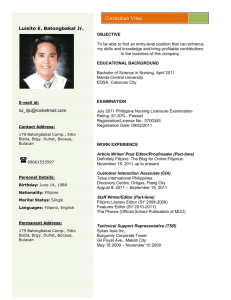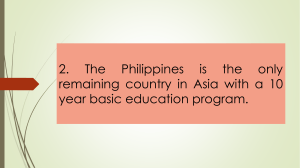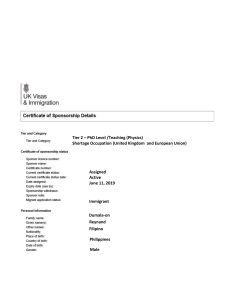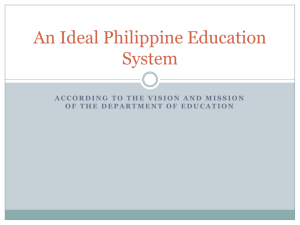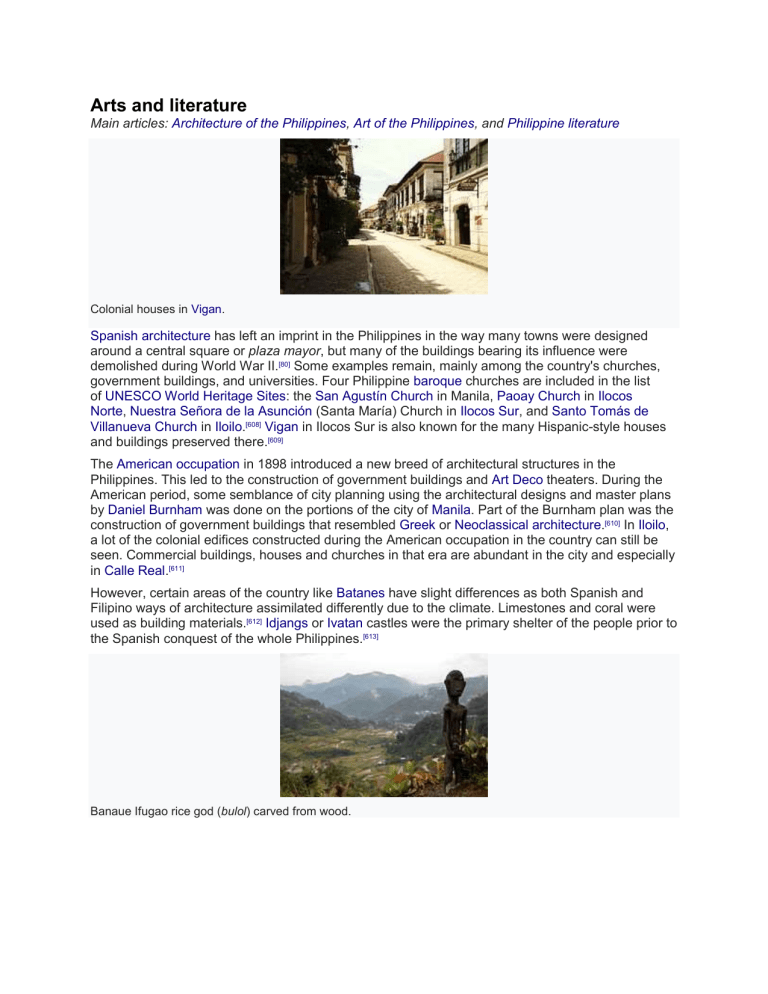
Arts and literature Main articles: Architecture of the Philippines, Art of the Philippines, and Philippine literature Colonial houses in Vigan. Spanish architecture has left an imprint in the Philippines in the way many towns were designed around a central square or plaza mayor, but many of the buildings bearing its influence were demolished during World War II.[80] Some examples remain, mainly among the country's churches, government buildings, and universities. Four Philippine baroque churches are included in the list of UNESCO World Heritage Sites: the San Agustín Church in Manila, Paoay Church in Ilocos Norte, Nuestra Señora de la Asunción (Santa María) Church in Ilocos Sur, and Santo Tomás de Villanueva Church in Iloilo.[608] Vigan in Ilocos Sur is also known for the many Hispanic-style houses and buildings preserved there.[609] The American occupation in 1898 introduced a new breed of architectural structures in the Philippines. This led to the construction of government buildings and Art Deco theaters. During the American period, some semblance of city planning using the architectural designs and master plans by Daniel Burnham was done on the portions of the city of Manila. Part of the Burnham plan was the construction of government buildings that resembled Greek or Neoclassical architecture.[610] In Iloilo, a lot of the colonial edifices constructed during the American occupation in the country can still be seen. Commercial buildings, houses and churches in that era are abundant in the city and especially in Calle Real.[611] However, certain areas of the country like Batanes have slight differences as both Spanish and Filipino ways of architecture assimilated differently due to the climate. Limestones and coral were used as building materials.[612] Idjangs or Ivatan castles were the primary shelter of the people prior to the Spanish conquest of the whole Philippines.[613] Banaue Ifugao rice god (bulol) carved from wood. The Spoliarium (1884) by Juan Luna. Pottery and weaving are among the very first art forms showcasing Filipino artistic design and are evident from cave dwellings all over the country. Among these are mostly anthropomorphic earthenware jars dating from c. 5 BC to 225 AD. Weaving was mostly done by women, using fibers from abaca, pineapple, cotton, and bark to make clothes, rugs and hats. Baskets were mostly utilized to carry grain and other foods.[614][615] Early Philippine sculpture is characterized by frontal nudity. One of the earliest forms is the bulols by the Ifugao people which serve as an assurance for bountiful harvests. The original functions of these sculptures are related to the ceremonies and beliefs of the tribes who created them. Arab and Russian missionaries also brought beveled type of carvings in the form of Okkil. The beginnings of this sculpture type started with the Islamization of Sulu. The Spanish colonization of the country did not hinder Filipinos creating sculptures for objects of adoration. During this time, sculptures of deities and saints were used to teach Filipinos Christian doctrines. During the American colonialism, worshippers of faith were not discouraged to sculpt in order to adorn churches. Filipinos' first exposure to painting happened when Spain conquered the Philippines and these were used as religious propaganda often displayed in churches. However, as education progressed and wealth increased, more and more artists started to shift from the traditional religious motifs to a more secular pattern of imagery.[616] Paintings of early modernist painters such as Damián Domingo often still had a religious association but the art of Juan Luna and Félix Hidalgo showed a trend towards political statement. The first Philippine national artist Fernando Amorsolo used post-modernism to produce paintings that illustrated aspects of Philippine culture, while other artists such as Fernando Zóbel used both realistic and abstract techniques. In the modern period, statuary was integrated with architecture in the Art Deco style. Examples can be seen in statues throughout the country especially in public parks and spaces. José Rizal is a pioneer of Philippine Revolution through his literary works. Philippine mythology has been handed down primarily through the traditional oral folk literature of the Filipino people. While each unique ethnic group has its own stories and myths to tell, Hindu and Spanish influences can nonetheless be detected in many cases. Philippine mythology mostly consists of creation stories or stories about supernatural creatures, such as the aswang, the manananggal, the diwata/engkanto, and nature. Some popular figures from Philippine mythologies are Maria Makiling, Lam-Ang, and the Sarimanok.[617] Philippine literature comprises works usually written in Filipino, Spanish, or English. Some of the most known were created from the 17th to 19th century. Adarna, for example, is a famous epic about an eponymous magical bird allegedly written by José de la Cruz or "Huseng Sisiw".[618] Francisco Balagtas, the poet and playwright who wrote Florante at Laura, is recognized as a preeminent writer in the Filipino language. José Rizal wrote the novels Noli Me Tángere (Touch Me Not) and El Filibusterismo (The Filibustering, also known as The Reign of Greed). He is considered a national hero.[619] His depiction of the injustices of Spanish rule, and his death by firing squad, inspired other Filipino revolutionaries to seek independence.[620] Several Filipino writers were awarded National Artist of the Philippines such as N. V. M. Gonzalez, Amado V. Hernandez, Francisco Arcellana, Nick Joaquín, F. Sionil José and many more. Music Main articles: Music of the Philippines, Original Pilipino Music, and Philippine folk music The harana serenade tradition, incorporating romantic folk music of the Filipinos Philippine music has evolved rapidly due to the different influences stemming from colonialism under other countries. Before the Spanish conquest of the islands, most music was reminiscent of, or heavily influenced by, nature. Some examples of this tribal music is Koyu No Tebulul of the T'boli and Ambo Hato of the Ifugao. This genre is often accompanied by gong music and one well known instrument is the Kulintang. During the Spanish era Rondalya music, where traditional string orchestra mandolin type instruments were used, was widespread. In the Philippines, Rondalya refers to any group of stringed instruments that are played using a plectrum or pick. Filipino instruments are made from indigenous Philippine wood; plectrums, or picks, are made from tortoise-shell. Other stringed instruments composing the standard Filipino rondalla are the 14-string bandurria found only in the Philippines, the laúd, the octavina, the Twelve-string guitar, the Ukulele, the bajo de uñas or double bass, the Guitarrón mexicano, and other Filipino-made instruments modeled and developed after the guitar. Harana and Kundiman are prevalent during this time wherein these songs are often used in courtship rituals.[621] Marcelo Adonay (organist), Simplicio Solis (organist), Diego C. Perez (pianist), Jose Conseco (pianist) and Doña Dolores Paterno (composer) were some of the recognized musicians in this era. Nowadays, American pop culture has a heavy hold on the Filipinos that evolved from the Spanish times when the American occupation happened. Along with Korean pop, these two are dominating the recent music scene in media.[622][623] However, the revival of Spanish-influence folk music has been possible thanks to the different choir groups coming in and going out of the country, such as the Philippine Madrigal Singers.[624]




